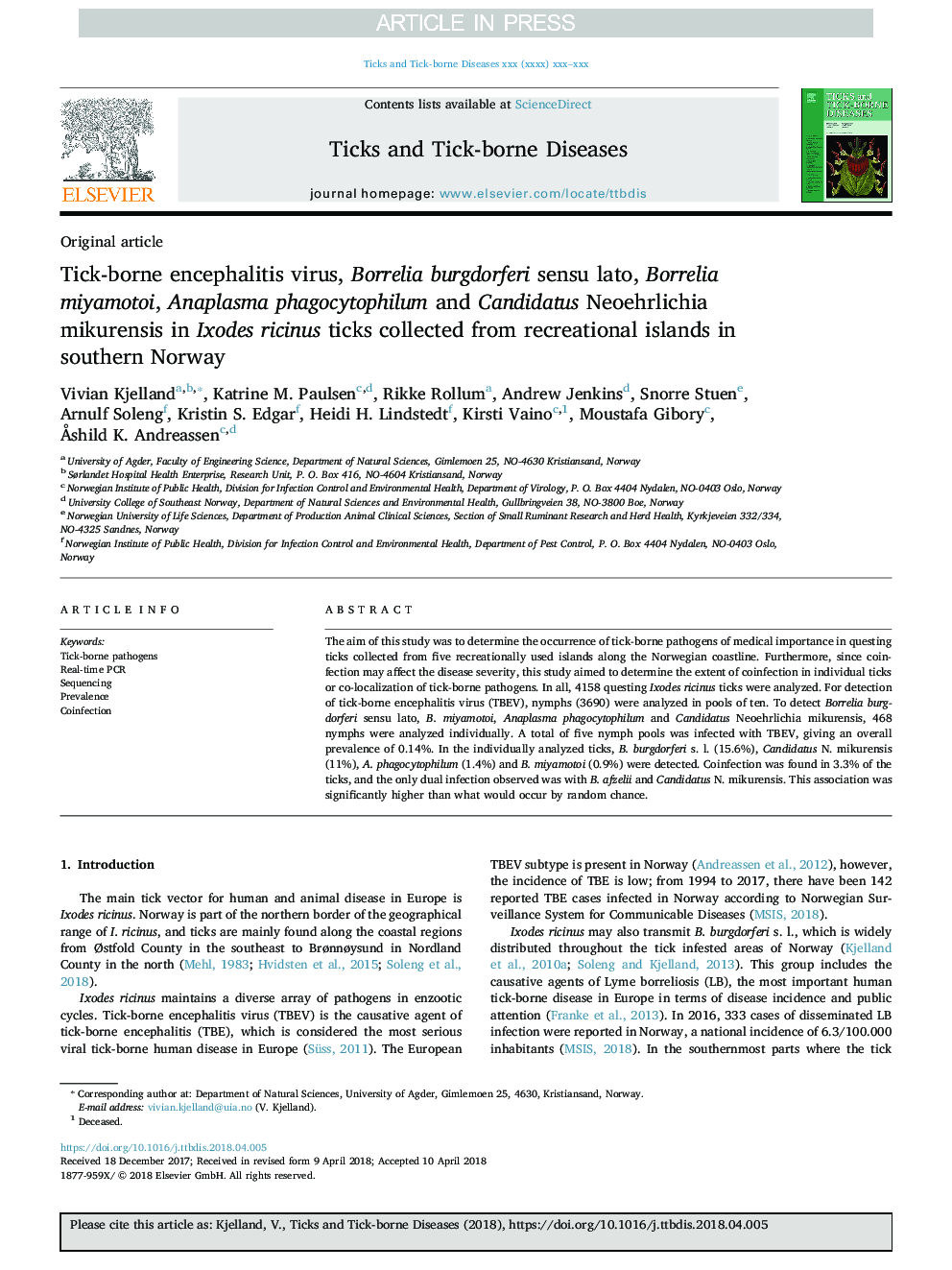| Article ID | Journal | Published Year | Pages | File Type |
|---|---|---|---|---|
| 8506977 | Ticks and Tick-borne Diseases | 2018 | 5 Pages |
Abstract
The aim of this study was to determine the occurrence of tick-borne pathogens of medical importance in questing ticks collected from five recreationally used islands along the Norwegian coastline. Furthermore, since coinfection may affect the disease severity, this study aimed to determine the extent of coinfection in individual ticks or co-localization of tick-borne pathogens. In all, 4158 questing Ixodes ricinus ticks were analyzed. For detection of tick-borne encephalitis virus (TBEV), nymphs (3690) were analyzed in pools of ten. To detect Borrelia burgdorferi sensu lato, B. miyamotoi, Anaplasma phagocytophilum and Candidatus Neoehrlichia mikurensis, 468 nymphs were analyzed individually. A total of five nymph pools was infected with TBEV, giving an overall prevalence of 0.14%. In the individually analyzed ticks, B. burgdorferi s. l. (15.6%), Candidatus N. mikurensis (11%), A. phagocytophilum (1.4%) and B. miyamotoi (0.9%) were detected. Coinfection was found in 3.3% of the ticks, and the only dual infection observed was with B. afzelii and Candidatus N. mikurensis. This association was significantly higher than what would occur by random chance.
Related Topics
Life Sciences
Agricultural and Biological Sciences
Animal Science and Zoology
Authors
Vivian Kjelland, Katrine M. Paulsen, Rikke Rollum, Andrew Jenkins, Snorre Stuen, Arnulf Soleng, Kristin S. Edgar, Heidi H. Lindstedt, Kirsti Vaino, Moustafa Gibory, Ã
shild K. Andreassen,
